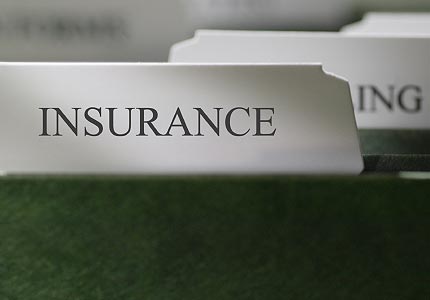Actual Cash Value
It is the cost of replacing damaged or destroyed property with comparable new property, minus depreciation and obsolescence. For example, a 10-year-old fan will not be replaced at current full value because of a decade of depreciation.
BCAR – Best’s Capital Adequacy Relativity (BCAR) –
It is a percentage, which measures a company’s relative capital strength and it is compared to its industry peer composite. BCAR is an important component in determining the appropriateness of a company’s rating. BCAR is calculated by dividing a company’s capital adequacy ratio by the capital adequacy ratio of the median of its industry peer composite using Best’s proprietary capital mode.
Encumbrance
A claim on property, such as a mortgage, a lien for work and materials, or a right of dower. The interest of the property owner is reduced by the amount of the encumbrance.
Liquidity
Liquidity is the ability of an individual or business to quickly convert assets into cash without incurring a considerable loss. There are two kinds of liquidity
Quick liquidity – refers to funds, cash, short-term investments, and government bonds and possessions which can immediately be converted into cash in the case of an emergency.
Current liquidity – refers to current liquidity plus possessions such as real estate which cannot be immediately liquidated, but eventually can be sold and converted into cash.
Reinsurance
It is an insurance that an insurance company buys for its own protection. The risk of loss is spread so a disproportionately large loss under a single policy doesn’t fall on one company. Reinsurance enables an insurance company to expand its capacity; stabilize its underwriting results; finance its expanding volume; secure catastrophe protection against shock losses; withdraw from a line of business or a geographical area within a specified time period.
Lapse Ratio
The ratio of the number of life insurance policies that lapsed within a given period to the number in force at the beginning of that period.
Impaired Insurer
An insurer which is in financial difficulty to the point where its ability to meet financial obligations or regulatory requirements is in question.
Dividend
The return of part of the policy’s premium for a policy issued on a participating basis by either a mutual or stock insurer. A portion of the surplus paid to the stockholders of a corporation.
Coinsurance
In property insurance, requires the policyholder to carry insurance equal to a specified percentage of the value of property to receive full pay-ment on a loss. For health insurance, it is a percentage of each claim above the deductible paid by the policy-holder. For a 20 percent health insurance coinsurance clause, the policyholder pays for the deductible plus 20 percent of his covered losses. After paying 80 per-cent of losses up to a specified ceiling, the insurer starts paying 100 percent of losses.
Casualty Insurance
Casualty Insurance is primarily concerned with losses caused by injuries to persons and legal liability imposed upon the insured for such injury or for damage to property of others. It also includes such diverse forms as plate glass, insurance against crime, such as robbery, burglary and forgery, boiler and machinery insurance and Aviation insurance.
Retention
The amount of risk retained by an insurance company that is not re-insured.
Insurable Risk
Risks for which it is relatively easy to get insurance and that meet certain criteria. These include being definable, accidental in nature, and part of a group of similar risks large enough to make losses predictable. The insurance company also must be able to come up with a reasonable price for the insurance.





